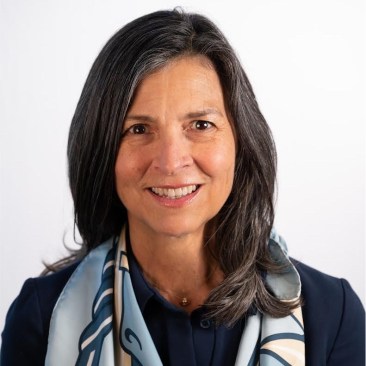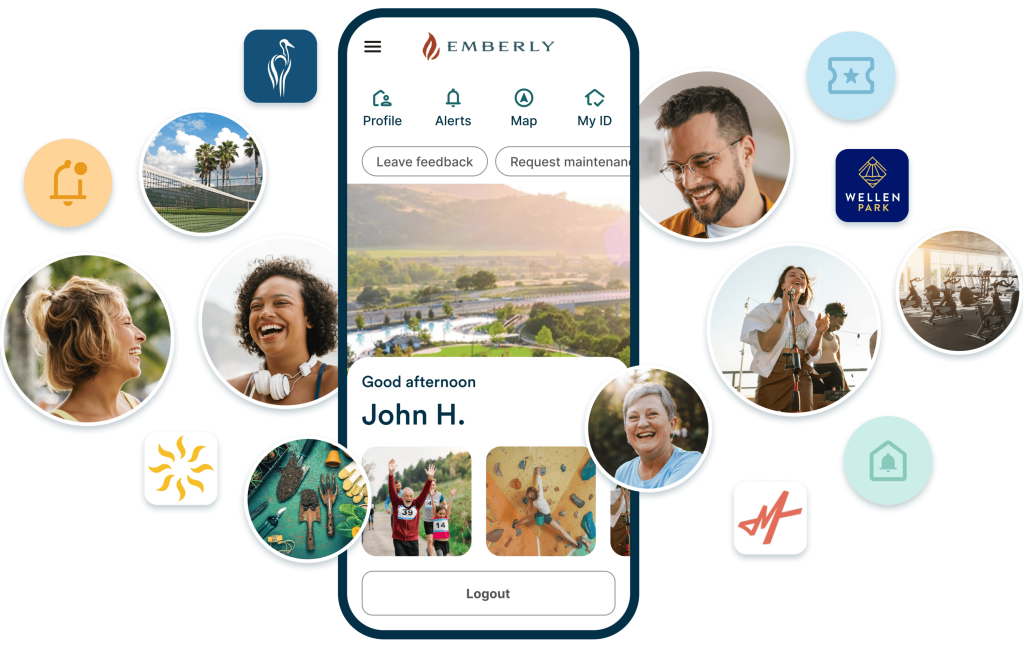Would homeowners download an app for where they lived?
This was the question Alosant wrestled with in 2017 while developing the RanchLife app for the Rancho Mission Viejo master-planned community in Orange County, California. Now, seven years and over 100 deployments of the software later, CEO and co-founder April LaMon says the question facing the company is now what else can the Alosant platform do for a community to personalize a user’s experience.
Alosant is a customer experience platform for master-planned communities and the company’s flagship platform, Alosant ResX, offers solutions for the entire customer journey, from home shopping to resident living for land developers, marketing, and lifestyle teams.
The company recently announced it secured Series A funding and appointed three new members of its leadership team: Kellie Corbin as vice president of sales; Danette Beal as vice president of marketing; and Tara Trevino as director of customer operations.
Following the funding round, LaMon spoke with BUILDER about the origins of Alosant, the company’s growth plans, as well as how the funding and leadership appointments will support its future growth.
Can you discuss the origins of Alosant?
We started Alosant in 2017 when a large-scale master plan developer, Paul Johnson—who is the developer of Rancho Mission Viejo—he and his team recognized that developing a large-scale community and getting the community activated and getting the people that live there engaged was a real challenge. He saw the opportunity with [residents having] phones in their hand and said why can’t there be one place where everything comes together and is branded to the community that everyone can access.
We set about building the RanchLife app. [Paul] was really passionate about how it needed to reflect their brand, their content. It needed to be able to configure content in a way where some residents saw things that were available to them and other residents didn’t. It had to be able to speak to different stakeholders in the community. It needed to talk with existing systems, so it was important that it wasn’t [something that] cleared the decks of all other systems that are already in place, but how do we sit on top and aggregate data that exists in otherwise siloed information. It needed to be something that was easy for residents to download and quickly get on board. The community is about half all-age homes and half 55+/active adult homes. We knew we needed to create a product that would appeal to a wide cross section of ages and experiences with technology.

April LaMon, CEO and co-founder of Alosant
From there, how did Alosant scale up to the company it is today?
We launched [the app to residents] at the end of 2017 and within 90 days over 90% of people that lived in the community were active users of the RanchLife app. It was at that moment that we said ‘I bet if Paul Johnson thinks this is an opportunity for his community, that other developers will recognize that as well.’
We took the underlying software, we branded that as Alosant, and we went to market late in 2018 talking to developers all over the country. It’s through those conversations that the platform quickly spread to be a North American platform that can take a brand-first, resident experience first platform to communities all across the country.
What feedback have you received from developers as well as from the residents?
We started as a product for the people that live in the communities but very quickly the developers recognized that one of the key decisions a home buyer is wrestling with is what would it be like to live there? Why should they buy in [a particular] development or community? That enabled us to have the app travel upstream to prospective buyers who wanted to answer that question. I think that has been a really important part of the decision process and why developers and their marketing teams are leaning on the app early on. Because it is user-driven, you can have a single app that covers the entire journey from any in the public to a serious home shopper to those under contract waiting to move in to residents. The app can span the entire customer journey and that is what is important. A scalable platform that you build once but you can build it for that end customer through their entire journey.
What would a typical user be able to see and do within an Alosant-developed app?
It’s a great communication vehicle because it is one-to-one. It’s uncluttered and it is not an ad-based platform. It’s also closed in a sense that there can be no user generated content published in the app that hasn’t been vetted. There are a number of publicly-available platforms where you hear of these downward spirals of doom where a few people stir the pot and spoil it for everyone. This is a much more controlled environment where the builder and developer can tell their story and draw in and engage that buyer early on. For people that already live [in the community], we used to see more reliance on Facebook. But a lot of people don’t want to be on Facebook anymore. It can be a little bit of a toxic environment and frankly [some people] just want to know what’s going on in their community and how they can get involved.
We manage all types of events, social events, fitness, events. All aspects of event management, including payment processing. We manage all types of reservable spaces, places, and things. We have one community with over 30 tennis courts and 25 pickleball courts and we are managing high-demand court reservation platforms. We’ve got one community with a gear garage and residents can check out a stand-up paddleboard or [check out equipment] if they want to play pickleball, tennis, or ping pong.
Another really growing area for us is around access control. We now embed your existing access control credentials into the app. You may share your fob with friends to use the pool, but you are not going to share your phone. By embedding the credential in the phone, you are ensuring the quality experience that these access points and amenities that your residents come to expect. You can also let your prospective buyer test drive the community and give temporary access control. They can all be issued, suspended, or revoked through the Alosant admin. This simplifies the access control process for everyone involved.
Who is involved in the process of building an app for a specific community?
I think what you would hear from any developer or builder is it takes an ecosystem of experts to bring these communities to life and to operate them. Whether it is your property management community, marketing partners, CRM providers, you need a whole host of people and tools to bring these communities to life. That is all true, but that is not that interesting to the end-consumer. They just want the most seamless, friction-free way to interact with the community at whatever stage of the process they are in. That is where the Alosant app sits, on top of the whole ecosystem. We are routinely working with marketing teams, software teams, IT experts, with existing systems and property management firms, with lifestyle directors. We really cut across that whole ecosystem of people and teams that they use to operate the community so we can make it as easy as possible for that consumer to interact back.
What does future growth look like for Alosant?
Every time we launch an app for a client, we are bringing on potentially tens of thousands of new users amongst people that are shopping [or] people that live in the community. We are collecting a treasure trove worth of data around how people interact with spaces and programming. For us, we see a couple of opportunities. We are doing a lot more work in dynamic mapping. If you want to create self-guided tours, if you want people to see schematically where your different neighborhoods or different products are. The mapping becomes a key tool to creating elevated experiences for people when they are on-site in the community. We know the website is going to do a great job of telling you what houses are for sale, but how do we bring everything else to life around those for-sale homes?
One of the big things that we’ve developed is a data bridge. The data bridge is collecting information from all of these other systems, ingesting them, and then finding the right threads to pull through that data to say what is the right message for [a specific user] based on this data bridge of information from all of these different sources. That’s where AI gets really useful, being able to look through very different layers of data to make sure the apps are rendering and the messaging is relevant to each person at every stage of the process.
How does the new funding and new leadership appointments support this trajectory of growth?
We’ve used the funding to bring in some really key talent into the organization and build out capabilities. We feel like we have a really strong product and we need to do a better job telling people about it. We’ve brought in sales and marketing resources. We can sell the heck out of the product, but we still have to pull it through into the market. Our new head of operations is really focused on not just how we let people know what we have but also how we ensure that we are delivering the best experience for our clients and their teams everyday. That’s been a lot of the initial use of the funding, to really beef up the team and get behind the product that we feel has been widely accepted and continues to grow. We just want more people to know about us and see the opportunity to add what could be viewed as an amenity within each of their projects.



